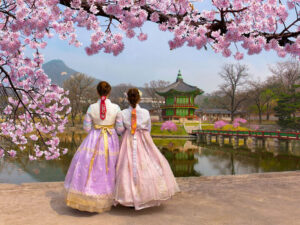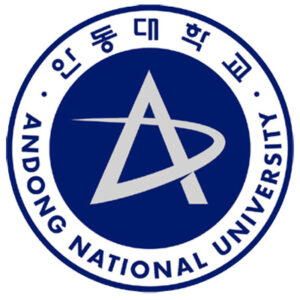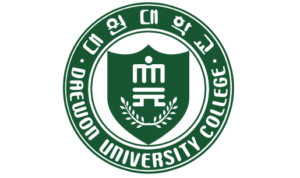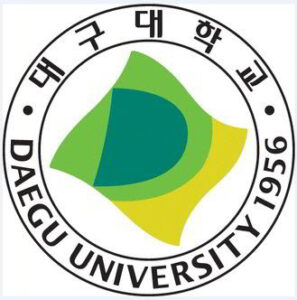South Korea and the South Korean
South Korea full name is the Republic of Korea, the country of kimchi, tourism and beauty. South Korea is located on the Korean peninsula in East Asia and is a republic. Centuries ago, Korea was an independent kingdom but since 1905, the Japanese took over the country. After World War II, Japan surrendered to the United States, the Korean peninsula gained independence but was soon divided at the 38th parallel into South Korea (supported by the United States) and North Korea.
Capital: Seoul
Area: 100,210 km²
Population: 51.25 million (2016)
Language: Korean
The 4th largest economy in Asia and the 15th in the world
Currency: Won (KRW), 1 won ~ 21.41 VND (exchange rate 04/6/2018)
Geography and climate
South Korea is located south of the Korean peninsula in East Asia. The east, west and south face the sea; the north borders the Democratic People’s Republic of Korea.
The terrain is divided into two distinct regions: the mountains and forests occupy about 70% of the area in the east; the coastal plains in the west and south. The largest city in Korea is Seoul, with an official population of over 10 million. Other major cities are Incheon, Daejeon, Kwangju, Daegu and Busan.
Korea has four distinct seasons. Spring and autumn are quite short; summers are hot and humid; winters are cold, dry and snowy.
The climate varies between regions. The average temperature in August, the hottest month of the year, is between 19 degrees Celsius and 27 degrees Celsius, while the temperature in January, the coldest month of the year, is between -8 degrees Celsius and 7 degrees Celsius.
Economy
South Korea is one of the most economically developed countries in Asia. Since the 1960s, agriculture and fisheries have contributed 30% of the country’s gross domestic product (GDP) while manufacturing only accounted for 16%. However, by 2010, agriculture and fisheries accounted for less than 5% while manufacturing accounted for more than 50%. Over the past 50 years, South Korea has achieved miraculous economic development and played an important role in the global economy. These economic development achievements are often referred to in the press as the “Miracle on the Han River” or “Miracle on the Han River”.
South Korea overcame the economic crisis in 1997 thanks to economic reforms, increased corporate governance and maintaining a safe society. A study by the World Bank said that South Korea will become one of the most prosperous countries in the world. GDP per capita ranking will rise to 8th place by 2025, just behind countries such as the US, Canada and the UK.
South Korea is one of the largest economies in Asia. Its gross domestic product in 2016 was 1,411 billion USD, with per capita income reaching 27,538.81 USD (2016). South Korea is one of the four Asian tigers including Singapore, Taiwan, Hong Kong and South Korea.
South Korea has large trade relations with China, the US, Japan and Germany. Major Korean companies include Samsung, Hyundai, LG Electronics and Lotte Group. Lotte Tower in Seoul is the tallest building in the country and the 5th tallest in the world.
Culture and Society
In South Korea, the official language is Korean. English, Chinese, and Japanese are also major foreign languages. European languages such as French, German, and Spanish are less common.
| Rank | Country | Safety | Criminal |
|---|---|---|---|
| 1 | South Korea | 83.10 | 16.90 |
| 2 | Singapore | 82.92 | 17.08 |
| 3 | Qatar | 80.00 | 20.00 |
| 4 | Japan | 79.16 | 20.84 |
| 5 | Taiwan | 78.78 | 21.22 |
| 6 | Hong Kong | 78.14 | 21.86 |
| 7 | Georgia | 77.25 | 22.75 |
| 8 | UAE | 76.69 | 23.31 |
| 9 | Denmark | 74.97 | 25.03 |
| 10 | Malta | 74.45 | 25.55 |
| 11 | Estonia | 73.82 | 26.18 |
| 12 | Switzerland | 73.77 | 26.23 |
Religion
South Korea is a free and multi-religious country. Many Koreans do not place much importance on religion, they celebrate holidays of many different religions but traditional rituals are still maintained.
Interesting things about South Korea
Surgery is too normal!
South Korea is famous in the world for plastic surgery. And in Korea, surgery is “an inevitable thing” of life. Even if a female student gets good grades, her parents will reward her with a plastic surgery voucher. According to statistics, 1 in 5 Korean women have plastic surgery.
Spaceship-speed Internet, “free” Wifi everywhere
Koreans use the fastest Internet in the world. Their average speed is more than 20 MB/s, almost double that of the US.
Are you used to having to order a drink to get a wifi password for a limited time? Then when you come to Korea, you will probably be surprised. Korea provides free wifi in all restaurants, supermarkets, and even in taxis.
In Korea, drinking is a necessary skill
Like Vietnam, there are countless drinking places in Korea. When you are sad, you drink, when you are happy, you drink, when you are free or bored, Koreans also invite each other to drinking places to talk about everything under the sun. Especially if you want to sign a contract, the drinking table is the most ideal place.
Physical contact is very normal
In some countries, when two men hold hands, it is easy to be considered an “abnormal” relationship. But in Korea, it is not strange if a man sits on another man’s lap and plays with his hair.
Avoid red ink
If in Vietnam, red symbolizes happiness and joy, in Korea, red is a taboo color. Koreans believe that if you write someone’s name in red ink, that person will have serious problems, even death.
The “OPPA”
Surely many of you know or have at least heard of Korean Oppa. “Oppa” if translated correctly means “brother, my love” depending on the situation. Or it is used to address a girl to a boy (husband and wife, lover). It means “my love”.
But in Vietnam, this word is often used to call male idols such as actors and singers.
Must-see tourist destinations in Korea
Korea is favored by tourists around the world because of its diverse natural beauty and interesting traditional culture. Let’s visit some of the beautiful sights of this country!
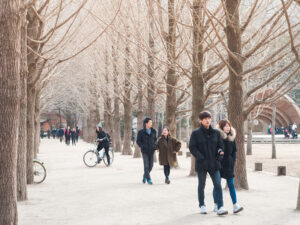
Jinhae
Jinhae-gu is an area in Changwon City, southern Korea. Jinhae is famous for its annual cherry blossom festival in spring. The two most beautiful cherry blossom viewing spots in Korea are Kyeongwha Railway Station and Yeojwa Canal in Jinhae. In particular, at Yeojwa Canal, couples can cross the romantic Romance Bridge, the filming location of the TV series “Romance” (Vietnamese name is Nhu Khuc Tinh Ca) with the participation of famous actors Kim Ha Neul and Kim Jae Won.
Seorak Mountain
Seorak Mountain is the third highest mountain in Korea, located in Gangwon Province. Seoraksan National Park is a treasure of Korean tourism with many outstanding landscapes such as the Ulsanbawi Rock Cluster with 5 rocks lying next to each other, on the top of each block there is a cauldron-shaped depression. There is also the Valley of Thousand Buddhas, also known as Seorak Valley, because the two sides of the valley are mountain ranges arranged like two rows of Buddha statues.
Jeju Island
Jeju is a famous island of Korean tourism, appearing in many Korean dramas. Some notable destinations are the eastern coastline of Seopjikoji with volcanic rocks of all shapes, Seongsan Ilchubong (also known as Dawn Peak) – a 5000-year-old crater with great views at dawn, and Halla Mountain with the mysterious scenery of snow-covered trees in winter. In Seopjikoji, there is also a house that was the filming location for the movie All In (Vietnamese name: One For All / Fateful Game) starring two stars Song Hye Kyo and Lee Byung Hun. In addition, Udo Island (Ngu Dao) located very close to Jejudo is also a famous destination of Korean tourism, with Ngu Dao Bat Canh being the 8 most beautiful scenes of the island. There is also a coastline with rare Rhodolith coral.
Bomun Pavilion
Bomun Pavilion is located in Gyeongju City, the ancient capital of the Shilla Dynasty. This is one of the tourist destinations in Korea where you can enjoy the beautiful scenery throughout all four seasons: cherry blossoms in spring, green leaves in spring, red and yellow leaves in autumn, and white snow in winter.
Haeinsa Temple
The 1,200-year-old Haeinsa Temple is the temple that preserves the oldest Buddhist scripture in the world, the Tripitaka Koreana. The temple also houses the oldest wooden Buddha statue in Korea. This is an important Buddhist destination for Korean tourism.
Juknokwon Bamboo Garden
Juknokwon Bamboo Garden is located in a man-made landscape complex behind a Confucian school in Damyang, Jeollanam Province. Here you can find a large bamboo forest, along with waterfalls and gazebos. This is one of the most popular tourist destinations in Korea.
Boseong Tea Fields
About 40% of Korea’s tea is produced in the “rolling fields” of Boseong, a popular Korean tourist destination that has been used as a filming location for popular TV dramas and movies. In addition to enjoying green tea products, visitors come here mainly to enjoy the wonderful scenery of the tea fields stretching across the hills.
Bulguksa Temple
Bulguksa Temple, located in Gyeongju City, is one of the most valuable temples in terms of history and religion in Korean tourism. Recognized by UNESCO as a world heritage site, the 1,500-year-old Bulguksa Temple houses seven national treasures of Korea, including two stone pagodas and two bronze-plated Buddha statues. Near Bulguksa Temple is Seokguram Grotto, another world cultural heritage.
Cheongsando Island
Cheongsando is a beautiful island off the southern coast of South Korea, surrounded by fishing villages and lush barley fields. The special thing about the fields here is that they are bordered by very characteristic low stone walls. In addition to the beautiful green and yellow of the barley, Korean tourists can also admire the beauty of rapeseed flowers and chrysanthemums in Cheongsando.
Nami Island
Nami Island attracts tourists to Korea because it is the filming location of the hugely successful TV series Winter Sonata (Vietnamese name: Winter Sonata) starring Bae Yong Joon and Choi Ji Woo. Coming here, you will be able to walk down the romantic path between two rows of cypress trees, a familiar scene in the movie Winter Sonata.
Korean Cuisine
When mentioning Korea, people immediately think of meticulously and elaborately decorated dishes with diverse menus and impeccable flavors. Let’s join Hoan Cau Viet to list the Korean dishes that you will never forget.
Kimchi
When mentioning Korea, people immediately think of kimchi. In Korea, kimchi is eaten in every meal every day, from the next meal, lunch and dinner. Korea has hundreds of different types of kimchi such as cabbage kimchi, radish… but they all have a strong and spicy aroma that makes the meal more delicious.
Bimbimbap mixed rice
Bimbimbap is the most attractive and typical dish of Korean cuisine. Just like Americans have hamburgers and the UK has sandwiches, Koreans are always proud to have this Bimbimbap mixed rice dish. This mixed rice dish is very easy to eat, suitable for many people’s taste because the ingredients are extremely simple, including only white rice, vegetables and meat.
Gimbap
Gimbap, also known as seaweed rice, is a harmonious combination of rice and other ingredients such as eggs, crabs, meat, vegetables, etc., making the boring rice dish extremely diverse and attractive. The ingredients are marinated deliciously and then rolled tightly with seaweed. All combine to create a symbol of Korean cuisine.
Tokbokki
This is a famous Korean street food, consisting of rice cakes stir-fried with a sweet and spicy sauce. Because the weather in Korea is quite cold, people here love this hot and spicy snack.
Black bean noodles
You are probably no stranger to black bean noodles, also known as Jajangmyeon, right? Because this traditional noodle dish appears in every Korean movie we often watch. Black bean noodles have the chewy, full texture of the noodles, mixed with the unique flavor of black bean sauce. The sauce of black bean noodles brings a bitter taste to the tip of the tongue, but the more you eat, the sweeter and more aromatic it becomes, unlike any other type of noodles in the world.
Major Holidays in Korea
1/1: New Year’s Day – Seol
This is the first day of the lunar year and is a national holiday. The day before and the day after this day are also holidays.
1/3: Independence Day
This day marks the large-scale independence movements for freedom from Japanese colonial rule in 1919.
5/4: Tree Planting Day
A day when the whole country plants trees.
5/5: Children’s Day
8/4 of the lunar calendar: Buddha’s Birthday
Solemn ceremonies are held at Buddhist temples. The highlight of the festivities on this day is the lantern procession in central Seoul.
6/6: Memorial Day
The whole country pays tribute to the souls of martyrs who died in the war to protect the country. The memorial service is held at the National Cemetery.
17/7: Legislative Day
The day commemorates the official promulgation of the Constitution of the Republic of Korea in 1948.
15/8: Liberation Day
On this day in 1945, Korea was liberated from 35 years of Japanese colonial rule. This day also marks the establishment of the Korean Government in 1948.
15th day of the 8th lunar month: Chuseok
Families hold celebratory ceremonies at home or visit their ancestors’ graves. They watch the full moon and pray for good things.
3/10: National Day
The founding of the state by Dangun, 2333 BC.
25/12: Christmas
This day is celebrated by both Christians and non-Christians, as in Western countries.

